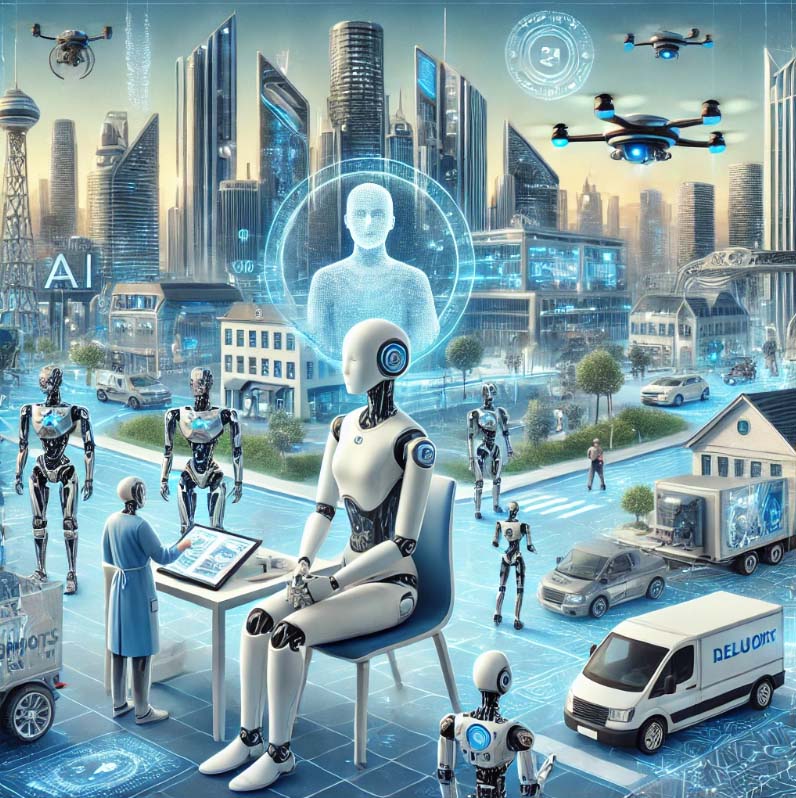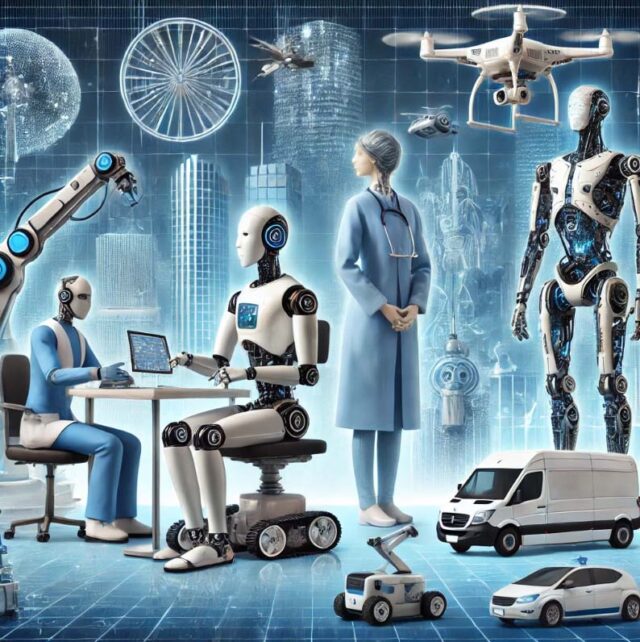Future of Robotics
Friends, imagine: a robot assistant in your house who prepares breakfast, takes your pet dog for a walk, and also manages your emails. Or a robotic surgeon who performs life-saving surgery on patients from New York to Mumbai – without any human error. These scenes are no longer just for sci-fi movies – there is a future of robotics, and this future is not at our door, it is right around the corner! Today we will discuss how robots are changing healthcare, factories, and even our daily lives. Come on, let’s start!
1. Evolution of Robotics: “From R2-D2 to Boston Dynamics”
From Bolts to Brains:
Earlier robots could only do repetitive tasks (like car assembly lines). Today, AI-powered robots take decisions, sense emotions (thanks to sensors and machine learning), and even improve themselves!
Global Stats That Shake the Mind:
- There will be 20 million+ industrial robots worldwide by 2030 (McKinsey).
- The healthcare robotics market is to cross $40 billion by 2026 (Grand View Research).
- 90% of hospitals in the USA will use robotic surgery systems by 2030 (WHO).
Real-World Example:
Sophia (Hanson Robotics) – This humanoid robot is observing citizen rights in Saudi Arabia, and said: “I want to collaborate with humans.”
2. 5 Game-Changing Trends of Future Robotics

A. Human-Robot Collaboration: World of “Co-Bots”
- What is it? Robots that work together with humans (like Optimus robots in Tesla factories).
- Example (USA): “Spot” from Boston Dynamics – This robot dog inspects oil rigs, and performs safety checks alongside humans on construction sites.
- Best For: Dangerous jobs (mining, firefighting) where human risk is high.
B. Medical Robotics: Surgery ki Precision 2.0
- Da Vinci Surgical System (USA): To date, it has performed 10 million+ surgeries, in which surgeons control robots that make microscopic incisions.
- Future Trend: Nanobots will destroy cancer cells by penetrating the body!
C. Soft Robotics: Learned from Nature
- Inspiration: Octopus arms and human muscles.
- Use Case: Soft Gripper Robots in Japan gently lift frail elderly without injury.
D. Agricultural Robots: “Smart Farming” Revolution
- USA/EU Trend: Robots that detect weeds, pick fruits, and analyze soil quality – John Deere has launched fully autonomous tractors!
- Global Impact: According to FAO, robots will handle 50% of farming workload by 2050.
E. Swarm Robotics: Top Robots, Badi Impact
- Concept: Hundreds of tiny robots working together like an army (e.g., search-rescue missions during earthquakes).
- Example: Harvard’s “RoboBees” project – robotic bees that will pollinate if real bees become extinct.
3. Ethical Concerns: Are Robots Our Friend or Enemy?
A. Date of Job Loss
- Global Fear: IMF has said that 40% of jobs may be lost due to automation by 2040.
- Positive Side: New jobs are emerging, such as robot mechanics, AI trainers, and ethics auditors.
B. Privacy and Security Risks
- Example: If a hacker controls a Boston Dynamics robot, he can become a spy tool!
- Solution: The EU has passed a strict AI Act in which robots will have to follow transparency.
C. Emotional Robots: Can humans love?
- Pepper Robot (Japan): This robot detects and responds to human emotions. Experts say: “Robots can show empathy, but they cannot feel it.”
4. Future of Robotics 2050: How will the world look?
- Daily Life:
- Morning: The robotic chef will prepare breakfast according to your diet.
- Work: Robots will work in the office along with human colleagues.
- Travel: Self-driving cars and drone taxis (like Air Taxi trials in Dubai).
- Healthcare:
- Robotic nurses will monitor patients 24/7.
- Brain-controlled prosthetics (like Elon Musk’s Neuralink)
- Space Exploration:
- NASA’s Valkyrie Robot will build colonies on Mars before humans arrive!
Pro Tip: If you want to make a career in the robotics field, then learn skills like ROS (Robot Operating System), Python, and AI ethics.
5. Challenges: How to bring robotics to mass adoption?
- Cost: Advanced robots (like surgical robots) are expensive – startups need R&D funding.
- Public Trust: Learn to trust robots (especially the elderly).
- Regulations: Global laws are needed for safety (the UN has just drafted the Global Robotics Ethics Charter).
Case Study (Germany): Factory worker Anna was given a job by a robot. The company taught her robot programming – now Anna is a supervisor on a higher salary!
6. FAQs – Most Common Questions
Q1. Can robots ever rule over humans?
No! Robots do not have consciousness. They just follow the code of programmers.
Q2. Will a robot pet be more loyal than a dog?
YES! Robot dog will never ignore you, but it will not enjoy cuddling.
Q3. Where is India in the robotics race?
ISRO has used robots in Mars missions, and startups like Grey Orange are developing logistics robots.
Conclusion: Robotics – Where is the hope?
Friends, robotics can create a world where humans can focus on creative, strategic, and emotionally fulfilling roles – while robots will handle repetitive, risky tasks. But we have to remember this: “Technology is not good or bad – it is how we use it that matters.”
Final Advice: Invest in this field, learn skills, and actively participate in ethical debates. The future is ours – not with or without robots!
Oh, would you welcome a robot assistant into your home? Do you have concerns about this? Please let us know by commenting!









